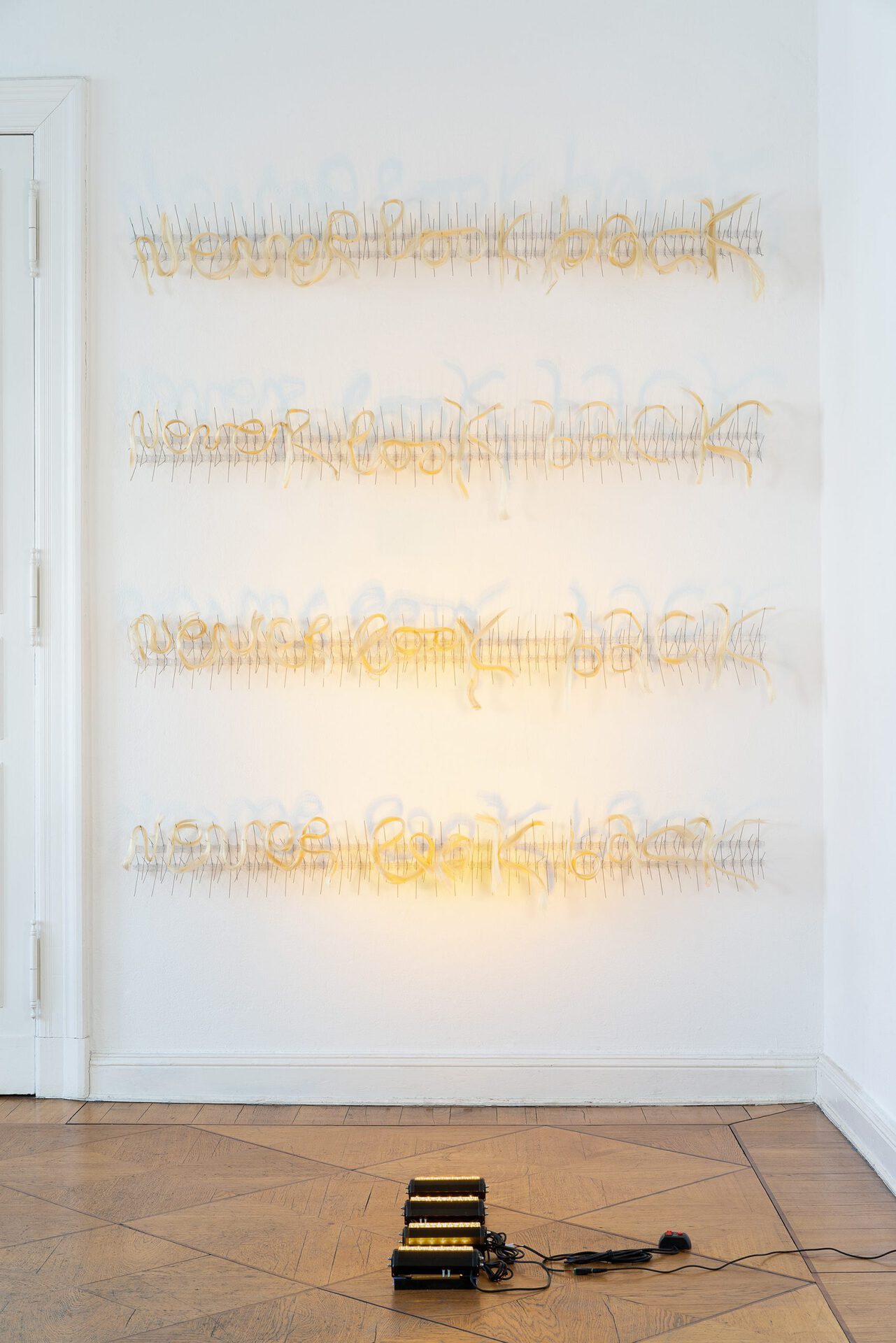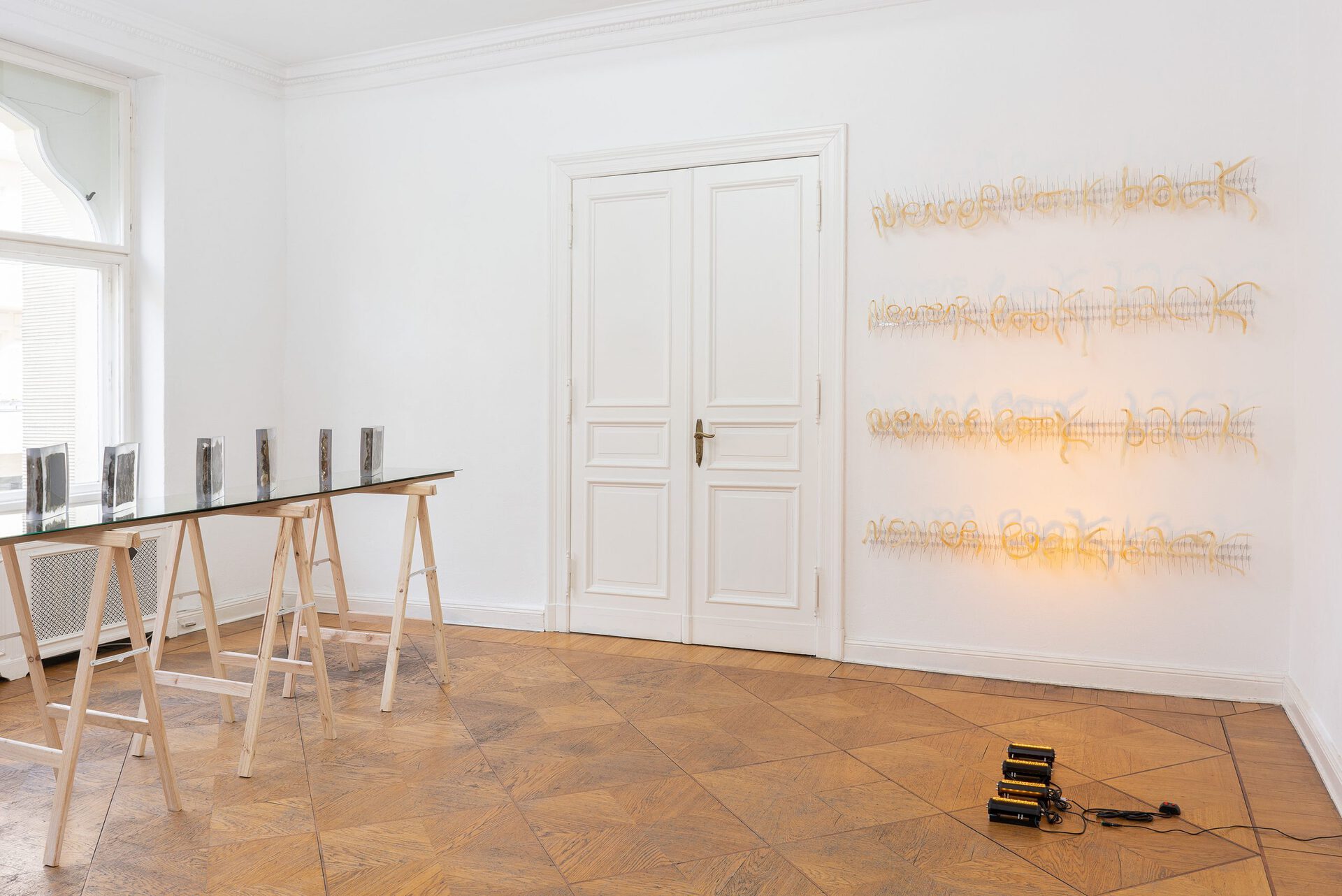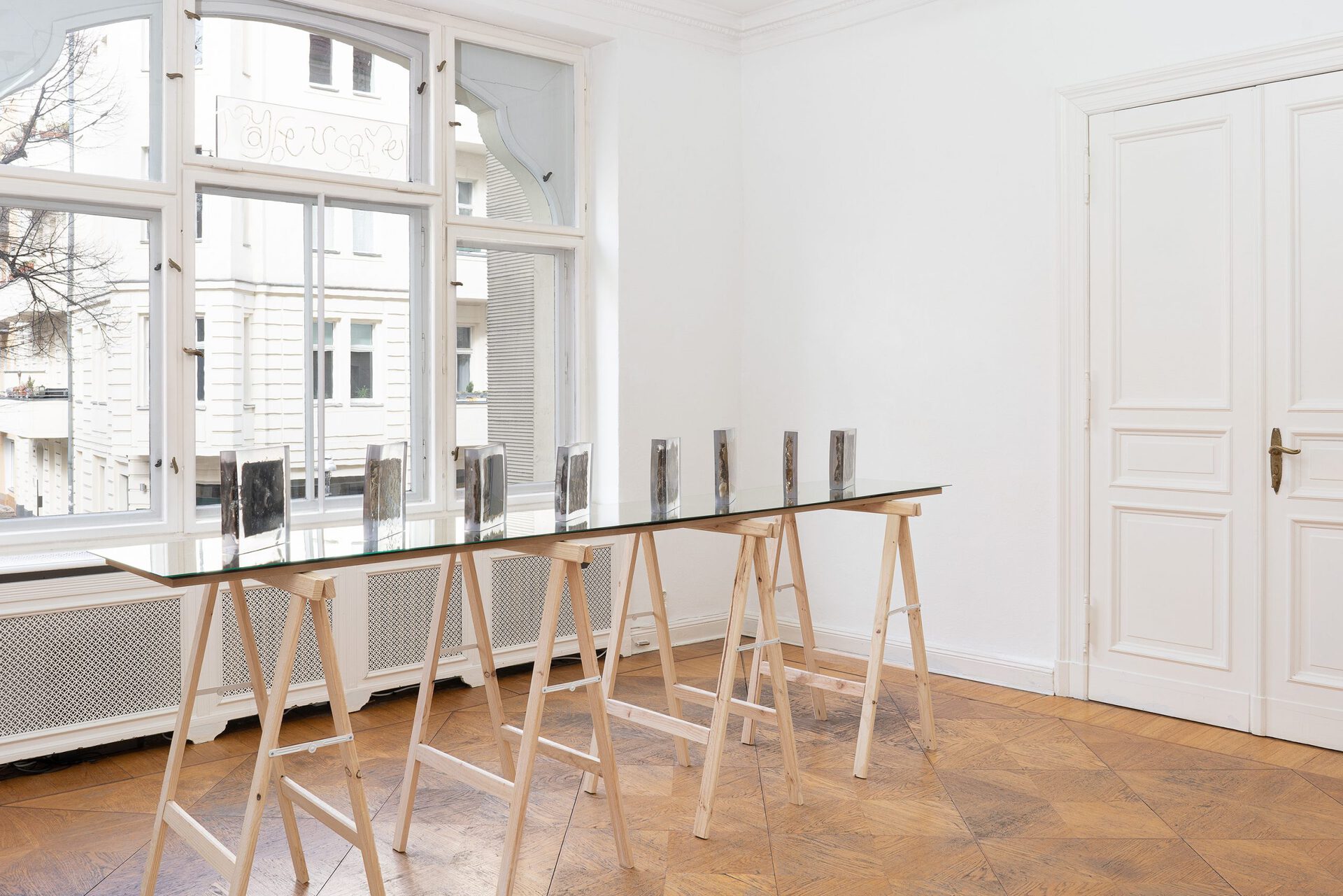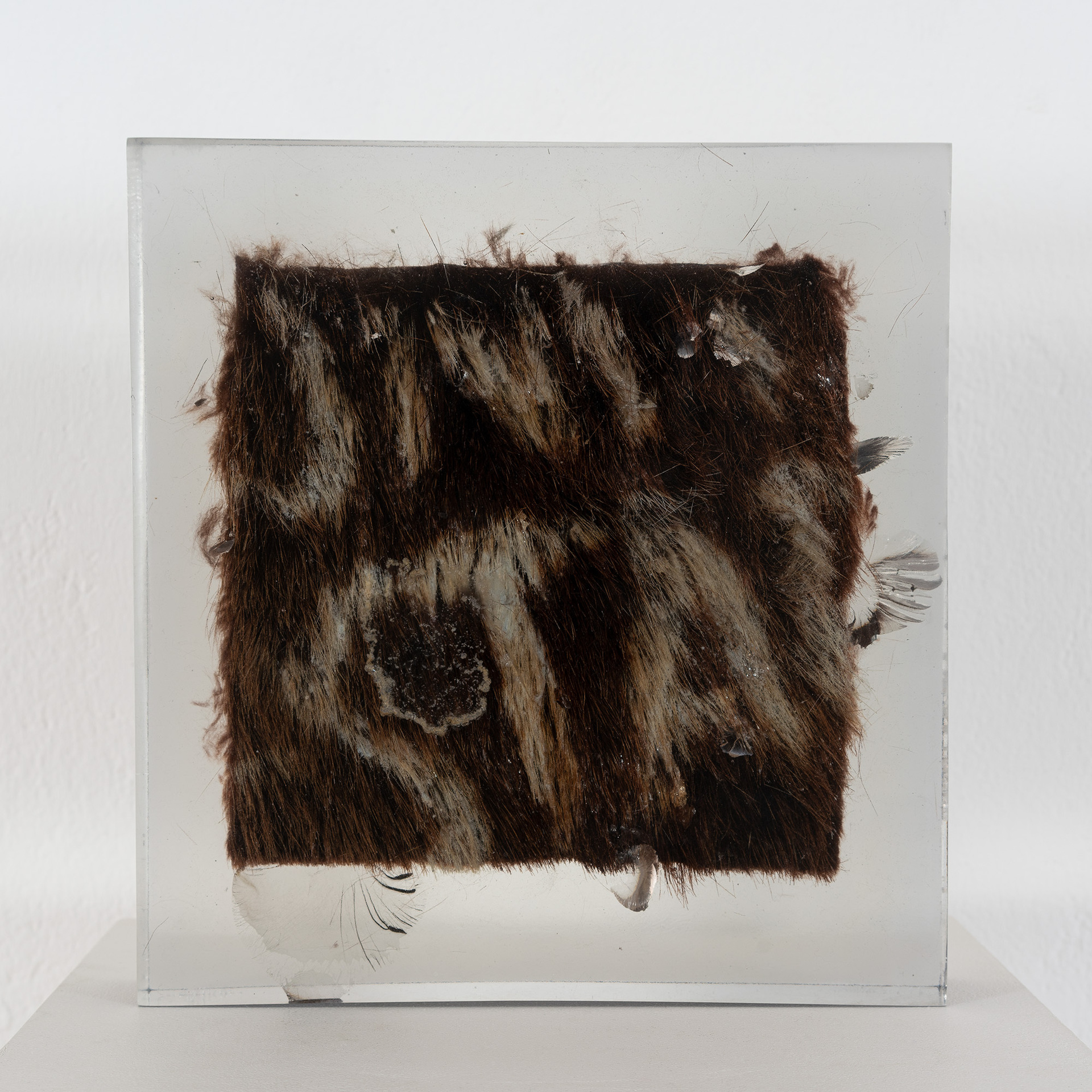Archive
2021
KubaParis
too much furute








Location
Galerie Anton JanizewskiDate
26.03 –07.05.2021Photography
Sascha HerrmannSubheadline
A massive array of fur coats stretches across the wall’s surface. On the hairy mass, the phrase ‘TOO MUCH FUTURE’ is inscribed by bleaching the letters into the material with blond hair dye. Imposing, almost iconic, the installation elevates itself over the space.Text
REBEKKA BENZENBERG
too much future
Galerie Anton Janizewski is pleased to present ‘TOO MUCH FUTURE’, the first solo exhibition of Rebekka Benzenberg. The artist studied under Ellen Gallagher, Rita McBride and Franka Hörnschemeyer at Kunstakademie Düsseldorf, where she graduated as a Meisterschülerin in 2020.
A massive array of fur coats stretches across the wall’s surface. On the hairy mass, the phrase ‘TOO MUCH FUTURE’ is inscribed by bleaching the letters into the material with blond hair dye. Imposing, almost iconic, the installation elevates itself over the space.
Set in contrast to this, the quote ‘never look back’ adorns another wall. This time by means of a shadow cast by strands of hair which form the words, reminiscent of the curved handwriting of a young girl.
Weary of thinking about the future while simultaneously refusing to look back at the past? This is one of the many ostensible contradictions the visitor will encounter in this exhibition. Rebekka Benzenberg aims to capture the present, which becomes a relic of the past in the archiving process. The objects cast in epoxy resin thus seem like historical artefacts.
The same applies to the fur, which is both controversial for ethical reasons and antiquated as a garment. Despite its precarious manufacturing conditions, fur remains associated with prestige and prosperity. Detached from its elitist context, the artist works on the material by means of a radical decomposition and besmeared inscription – gestures of rebellion. Through this act of appropriation, the inscribed layers of meaning are recoded, but never completely overwritten.
Rebekka Benzenberg wrests the materials from their exclusive context precisely in order to criticize it. As symbols of power structures, far-reaching mechanisms of oppression are inscribed on the objects used. Fur, blond synthetic hair, bleaching and shaving hair represent (western) ideas and practices of beauty, which go hand-in-hand with a certain image of women within a capitalist system.
By restaging these elements, Rebekka Benzenberg opens up the critical subtext of her work. The fine strands of hair are illuminated by warm light, creating a soft and playful shadow writing – an attractive aesthetic. The radicality, however, is revealed at second glance, as the arrangement sits on sharp-edged pigeon spikes. These violent defence strategies and exclusionary mechanisms are continuously addressed by the artist.
In doing so she is aware of her own privileges within this power structure. This reflection and self-confession are equally expected from the viewers. In this sense, the brutality and ambivalence of the works provoke a position, a stance, an opinion. And what could be more relevant in these times?
Pia Bendfeld, 2021
Pia Bendfeld